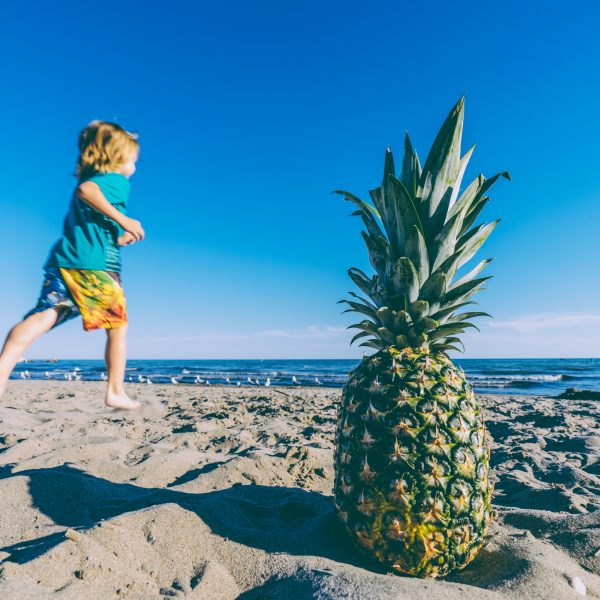Larger portions a big piece of the childhood obesity puzzle

Researchers from Penn State University have found that children between the ages of three and five are susceptible to the ‘portion size’ effect – the tendency to eat more when larger portions are served – finding that children will consume more, both in terms of weight and calories – when larger portions of meals and snacks are available.
Alissa Smethers, a doctoral student at the University, said the findings suggest that those working in early childhood education and care (ECEC) and other caregivers should “pay close attention to not only the amount of food they serve, but also the variety”.
Ms Smethers acknowledged the challenge of defining appropriate portion sizes for all preschoolers, given the calorie requirements that vary due to differences in height, weight and activity level. She recommended looking at the proportions of different foods being served, and using the MyPlate nutrition guide for support.
A good “rule of thumb” suggested by Ms Smethers was to fill up half the plate with fruit or vegetables. Her advice is consistent with that provided to The Sector by Mandy dos Santos, founder of Little People Nutrition. Ms dos Santos recommended that ECEC educators align themselves with the Get up and Grow guidelines on what they should be giving the children each day, and look at a plate and think, “does half of it have veggies, a quarter protein and a quarter carb based foods?”
Ms dos Santos said “Our role as educators and parents is to have the variety of nutritious foods on the table. That might be rice, a meat dish, a vegetable dish and perhaps even some fruit (yes fruit can be offered at the main meal too!) A child then decides what and how much they would like to eat. If they eat half a cup of meat and two tablespoons of pasta, that’s ok. If they eat fruit and rice, that is okay too.”
Barbara Rolls of Penn State University said the results of the study also suggest that the portion-size effect can be used strategically by caregivers to help children eat more fruits and vegetables.
“You can also serve them at the start of the meal or on their own as snacks. When there are no other foods competing with them, kids may be more likely to eat them,” Ms Rolls said.
The researchers undertook their work to determine if the established portion size effect, well documented in adults, was accurate for children also. Prior to the study, some researchers believed that young children could sense how many calories from food they need and adjust their eating habits accordingly, a process called “self-regulation.”
Previous studies have tested this theory by looking at children’s eating habits at one meal or over a single day. But Ms Smethers said it may take longer — up to three to four days — for self-regulation to kick in, and so she and the other researchers wanted to study the portion size effect in children across a full five days.
46 children between the ages of three and five were recruited for the five-day study, based on a population attending ECEC services on the University Park campus. All meals and snacks were provided for the children, who during one five-day period received baseline-sized portions — based on Child and Adult Care Food Program requirements — and during another period had portions that were increased in size by 50 per cent.
For the larger portion meals, researchers wanted to serve similar portion sizes to those encountered by children in their everyday lives. For example, instead of getting four pieces of chicken nuggets, they would get six, for a 50 per cent increase, Ms Smethers said.
During the five-day study, children were free to eat as much or as little of their meal or snack as they wanted. When they were done eating, their leftovers were weighed to measure how much each child had eater.
Each child wore an accelerometer during the study which measured their activity level, with researchers also measuring and recording their height and weight. After analysing the data, the researchers found that serving larger portions led to the children eating 16 per cent more food than when served the smaller portions, leading to an extra 18 per cent of calories.
Ms Rolls said that, if preschoolers did have the ability to self-regulate their calorie intake, they should have sensed that they were getting extra calories over the five days and started eating less, but that researchers found no evidence of that.
Children with higher BMI percentiles for their age were more likely to be influenced by the presence of larger portions, and that the portion size effect was stronger in children experiencing being overweight or obese than more proportioned children.
“We found that while the portion size effect is powerful overall, some children seemed to be more susceptible to the effect than others,” Ms Smethers said. “Children who were rated by their parents as more responsive to food when it’s in front of them were also affected more by portion size, while children who were rated as paying attention to whether or not they were actually hungry were less affected by portion size.”
The research, which was supported by The National Institutes of Health and the United States Department of Agriculture has been published in the American Journal of Clinical Nutrition.
Popular

Quality
Practice
Research
Small ways to teach babies and toddlers body safety and consent in early learning
2025-12-15 08:00:40
by Fiona Alston

Quality
Research
Food safety in early learning centres: Protecting children through better practices
2025-12-15 07:45:24
by Contributed Content

Practice
Quality
Provider
Research
Workforce
Allied health professionals and early childhood program providers invited to join Preschool Boost directory
2025-12-15 07:45:57
by Fiona Alston
















